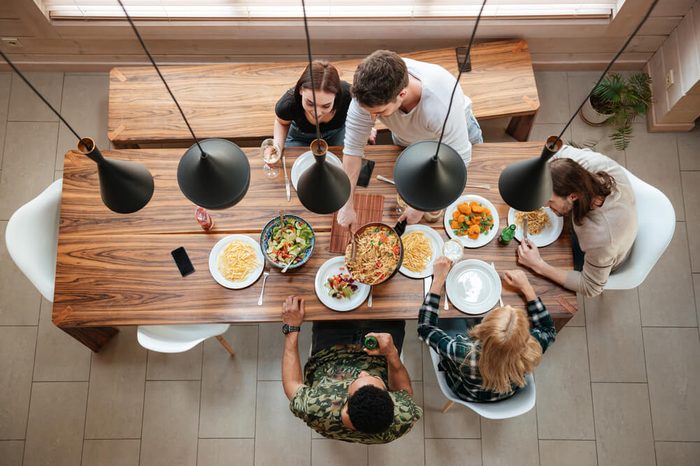
Studies show that what you order, and how much of it you eat, has very little to do with cravings
Ever sit down to eat, scan the menu, and something just “pops out” at you? It’s not your appetite; it’s how the food is represented. In a recently published paper, Cornell professor Brian Wansink, PhD, author of the new book Slim by Design, reveals many of the fascinating strategies restaurants employ to pique your interest. Learning these tricks and tactics could help you outsmart temptation next time you dine out (and Wansink also hopes to work with restaurants to propose menu makeovers that promote more healthful eating). Watch out for these secrets your waiter isn’t telling you.
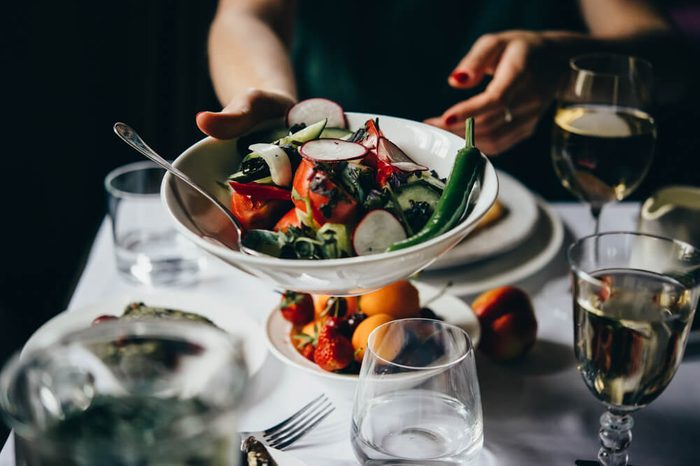
They use mouthwatering language
Does merely reading about the dish “Pan-Roasted Pork Loin With Summer Whipped Potatoes” kick-start your cravings? That’s intentional. In one study, when a menu item was described in great detail (for example, “Succulent Italian Seafood Filet” rather than “Seafood Filet”) its sales increased by 27 percent. This carefully researched technique convinces you not only to purchase the entrée, but to also enjoy it more.
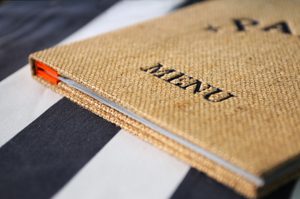
They get the psychology of price and real estate
Menus often avoid using decimals and dollar signs. An item listed as “14” will sell better than one listed as “$14.00.” More numbers make the price seem higher, and the “$” sign and the word “dollars” draw attention to the price. Some menus also prefer not to line prices up in a straight vertical line, so you’re forced to read each entrée—and be tempted by the alluring dish descriptions—rather than scan for the least expensive one. Also: The first section of the menu and the beginning of each subsequent section are prime places for expensive entrees, because that’s where diners tend to scan first. Similarly, items placed on the top and bottom of columns have 25 percent higher sales. “Sour spots”—the spots customers rarely look—tend to be on the bottom left side of menus. (These are the absolute unhealthiest meals you can order at restaurants.)
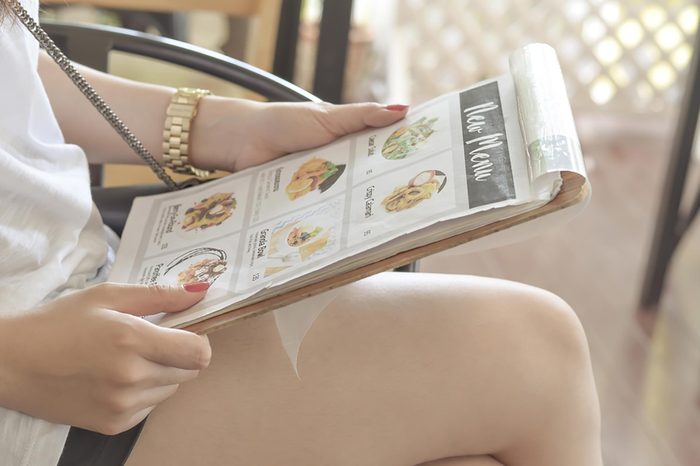
They play with fonts to catch your eye
People tend to view bold listings 42 percent more than plain type when they read, research shows. If an item is bold, chances are the restaurant wants to sell more of it (ie “California Lobster” would be highlighted more than “Kid’s Mac ‘n Cheese”). Customers also pay more attention to dishes that have a contrasting font, font color, or type size.
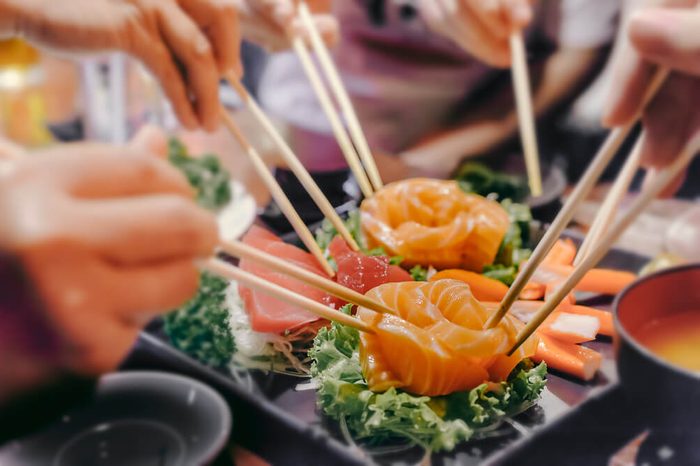
They make a “picture” perfect
Illustrations, icons, or photos of dishes are there for one reason—to make you drool. It’s basic marketing: Consumers pay more attention to ads with graphics. They also notice color ads before black-and-white ads, and look at color ads more often and for longer periods of time. The same thinking applies to a pretty photo, whether it’s toasted cheese focaccia with glazed onions or a decadent chocolate dessert. (These are the dirty kitchen secrets the kitchen crew won’t tell you about.)
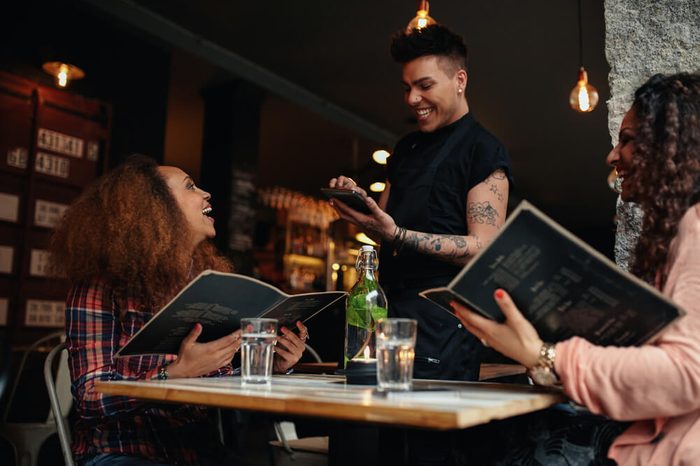
They tell you what’s best
When you see words like “Chef’s Recommendation,” “Traditional Favorite,” or “House Specialty,” the restaurant is intentionally telling you that those entrees are popular, often to sell their more profitable items and to draw you away from your go-to orders that may not make them as much money. This low-key technique is especially popular at fine dining restaurants that refrain from more obvious tactics, like large type sizes or icons. Descriptions like these work: They can increase sales by 28 percent and increase the amount diners eat by 13 percent, research shows.
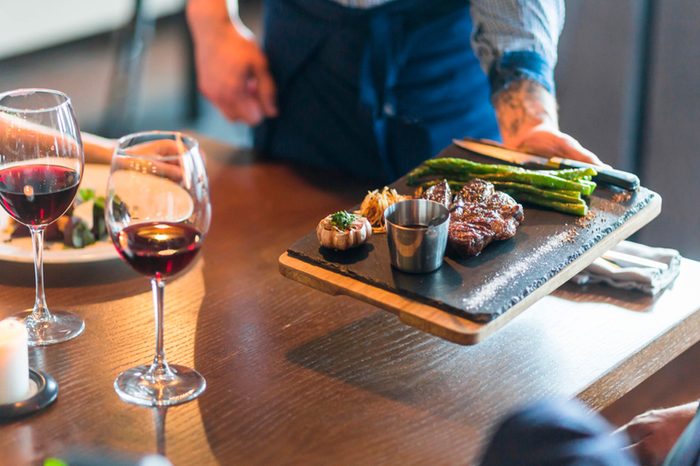
They cross-promote brands you know
Using brand names in menu items confers a built-in trust and creates a certain guarantee to diners that they will love the dish. This can range from casual (Jack Daniels BBQ Ribs and Twix Blizzards) to high end (Kobe beef kabob or Niman Ranch pork loin).
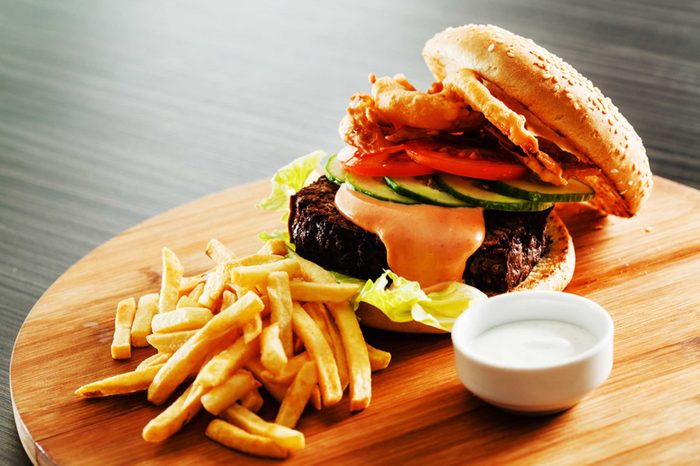
They avoid “healthy”
When items are described as “healthy,” sales drop. The word suggests the dish is less indulgent or flavorful, and it is a turnoff to many people. Alternative tricks that are less likely to backfire include using a signpost, like a little green leaf icon sometimes placed beside salads or other healthier choices.
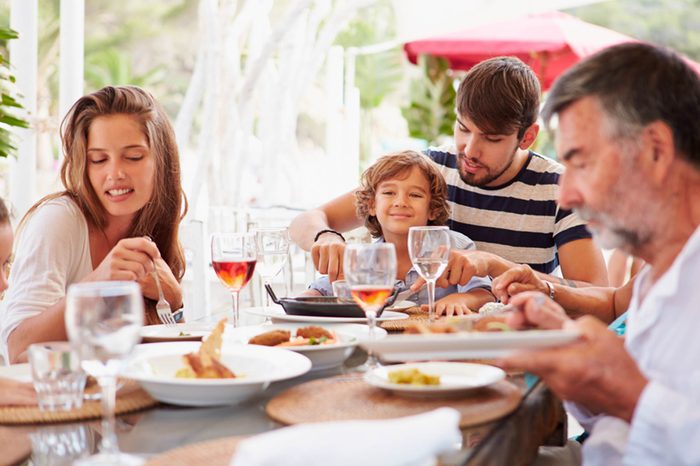
They bring back memories
Nostalgic names have a positive effect on consumer’s buying habits; think Grandma’s Chicken Dumplings, Old-style Manicotti, or Oktoberfest Red Cabbage. Alluding to a diner’s perceived or real family traditions and cultures can trigger happy reminiscing—and prompt orders.
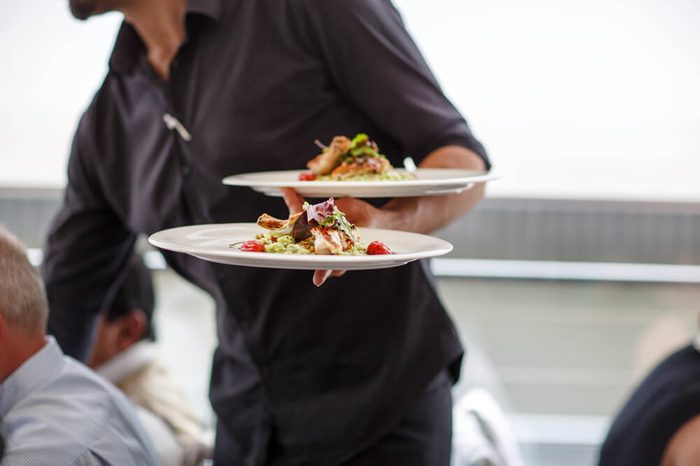
They connect to a location
Food and geography tend to pair nicely together, and dishes that help conjure up a visual image of a certain region can sell well, such as Southwestern Tex-Mex Salad, Georgia Peach Tart, and Iowa Farm-raised Pork Chops. (These are the most overpriced foods you’ll find on restaurant menus.)